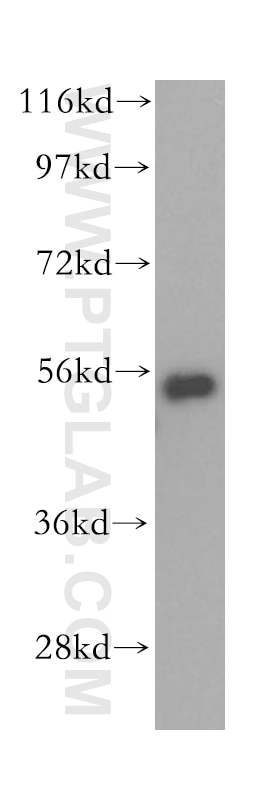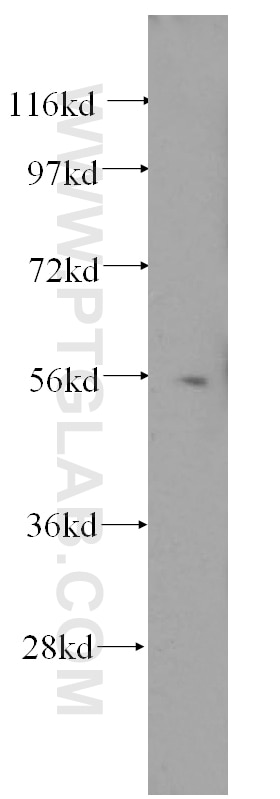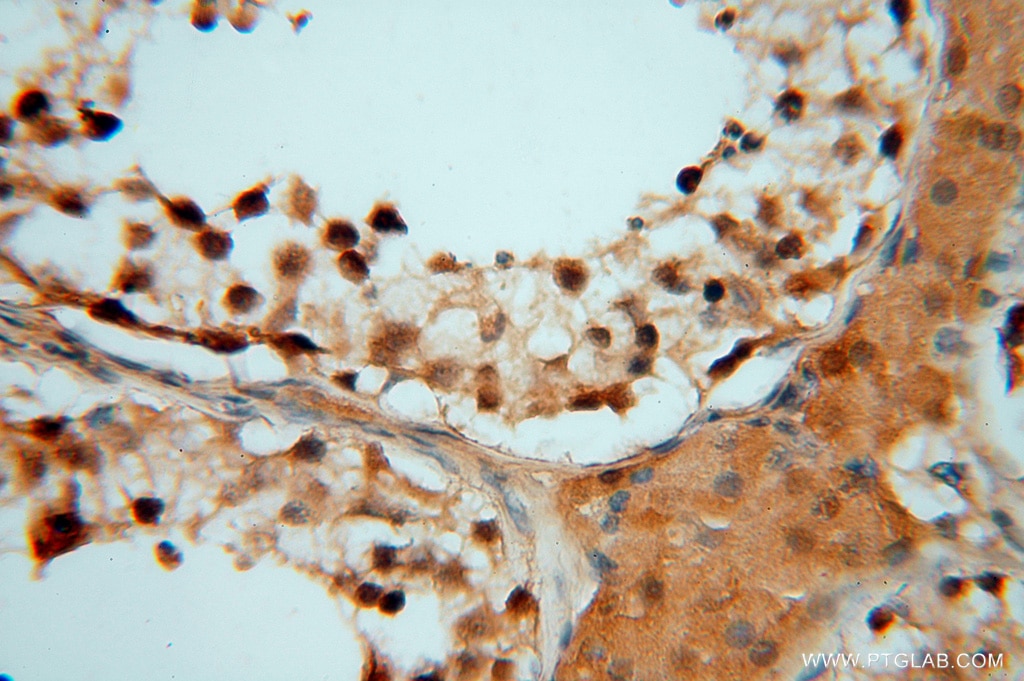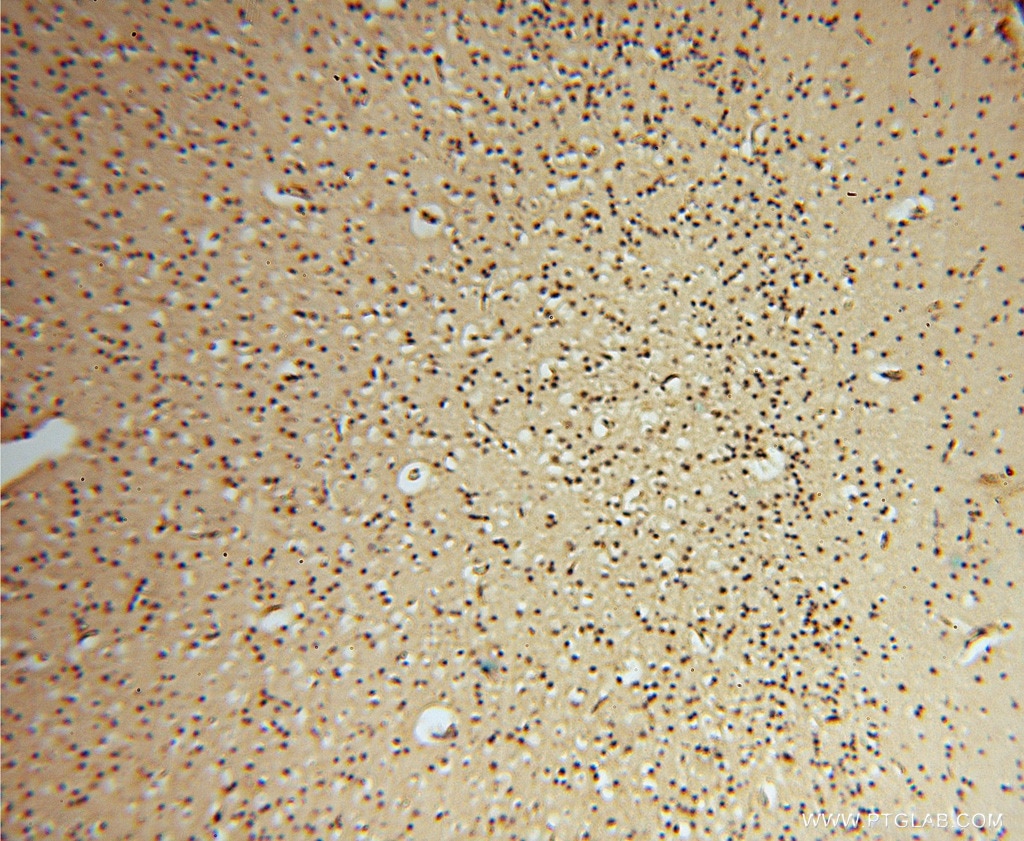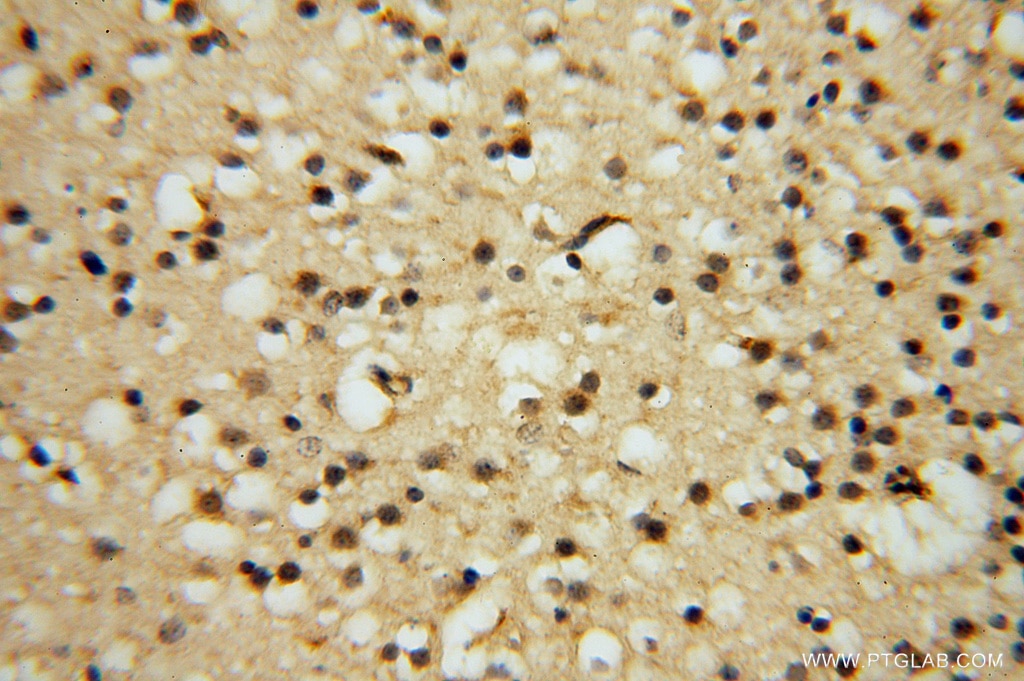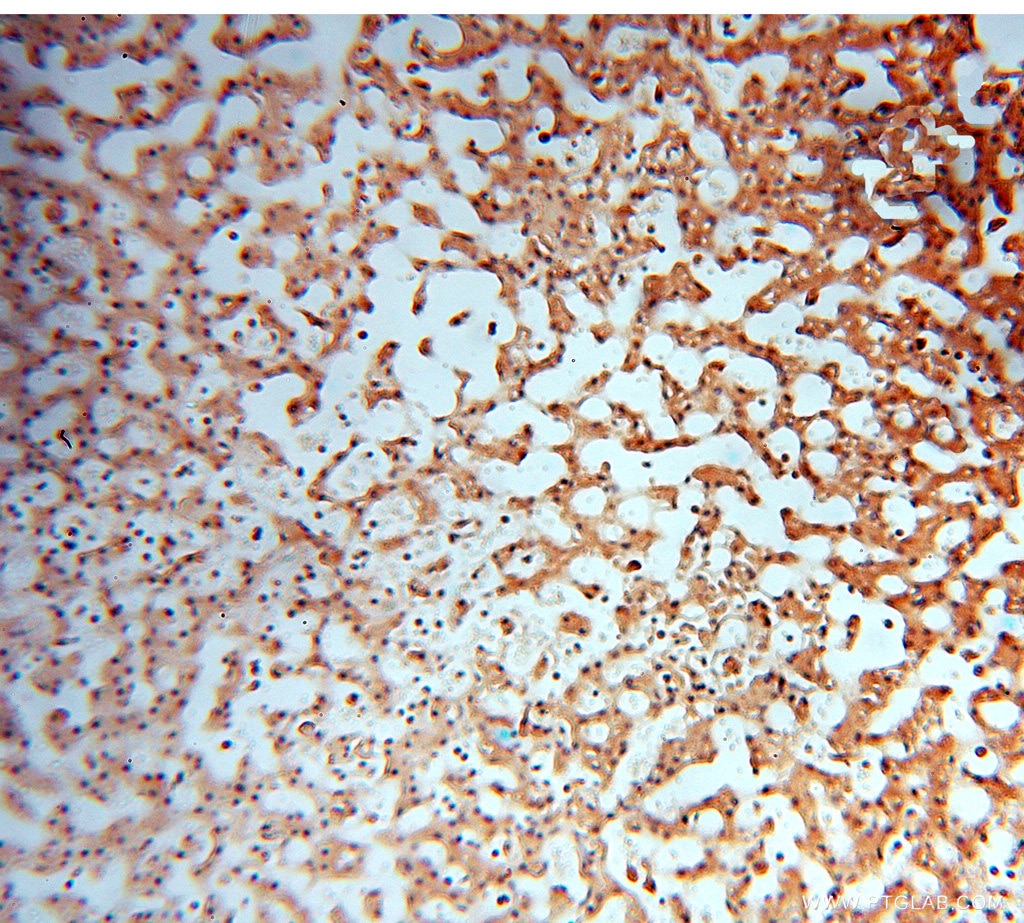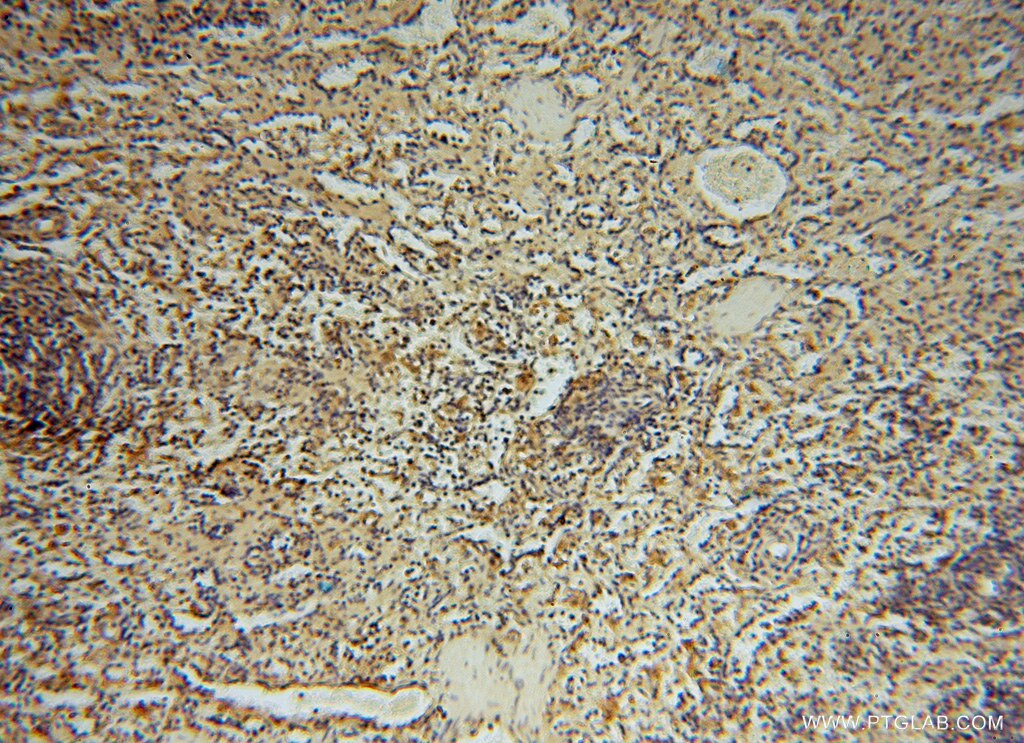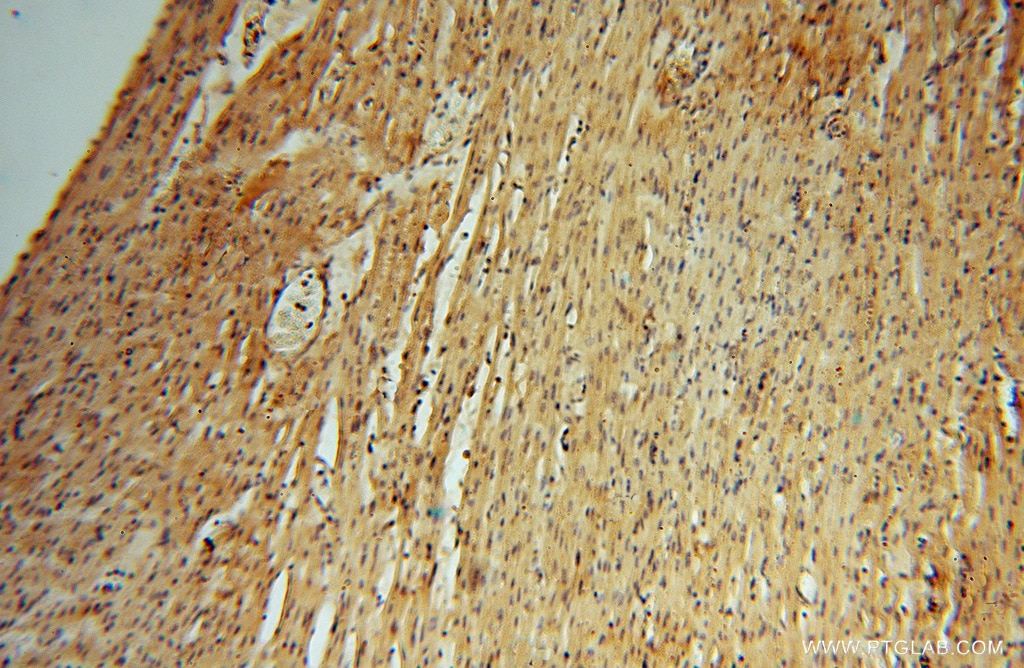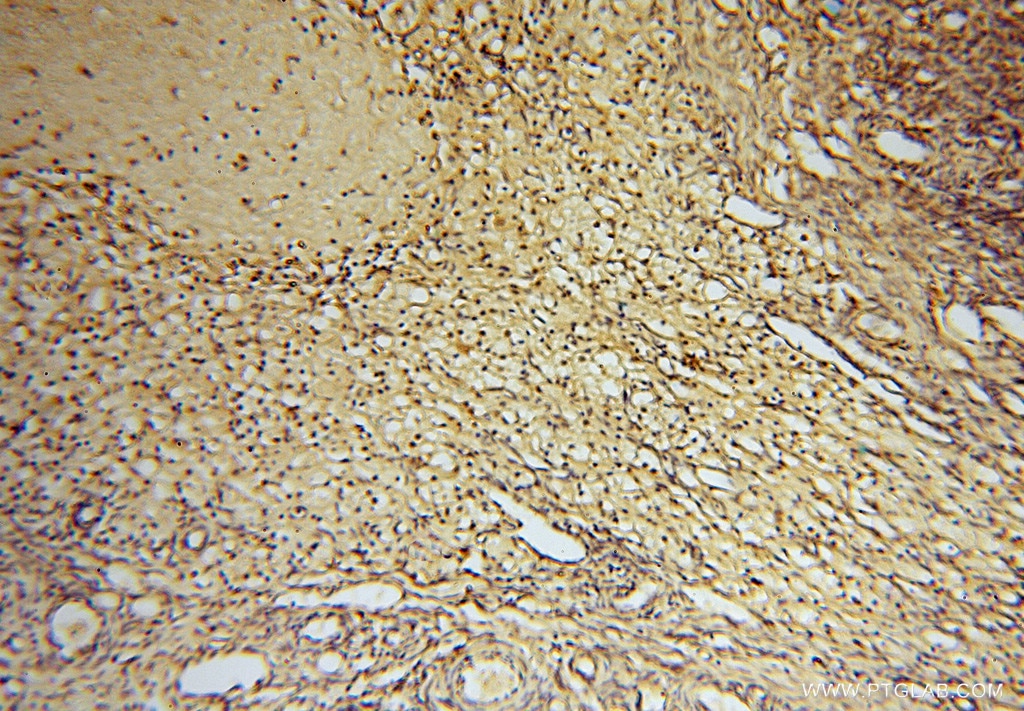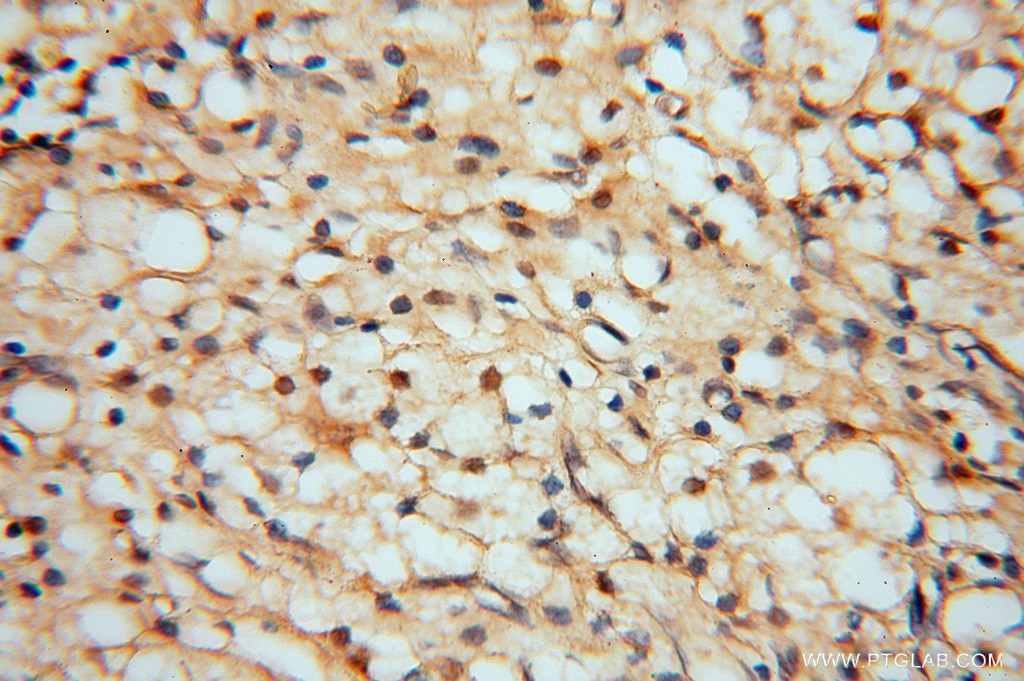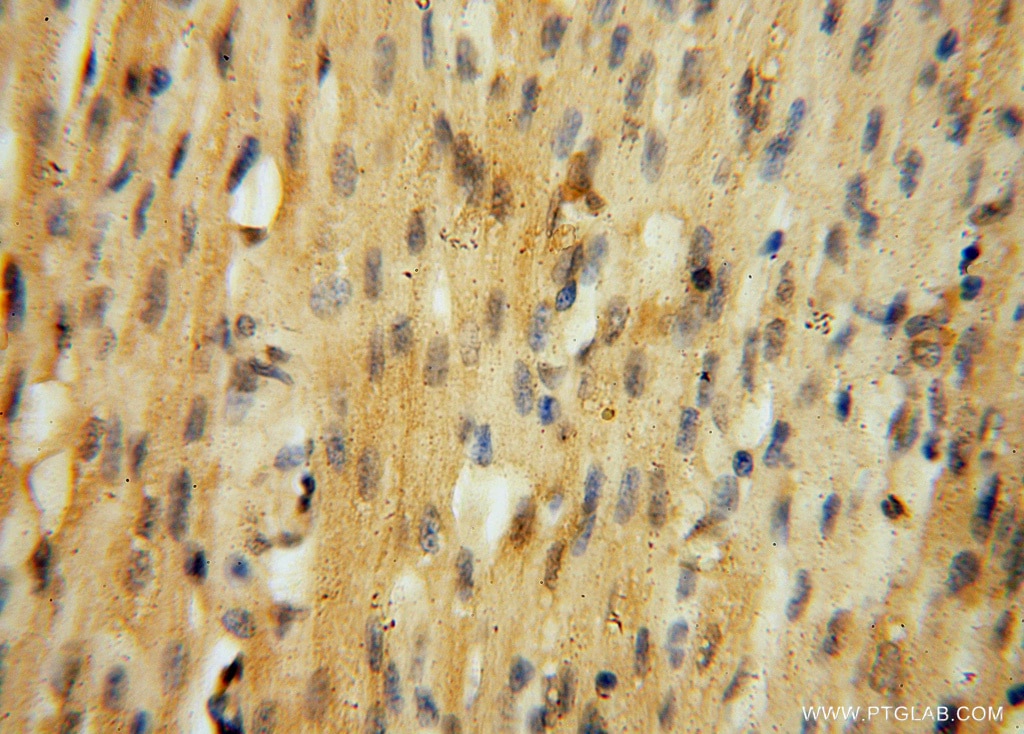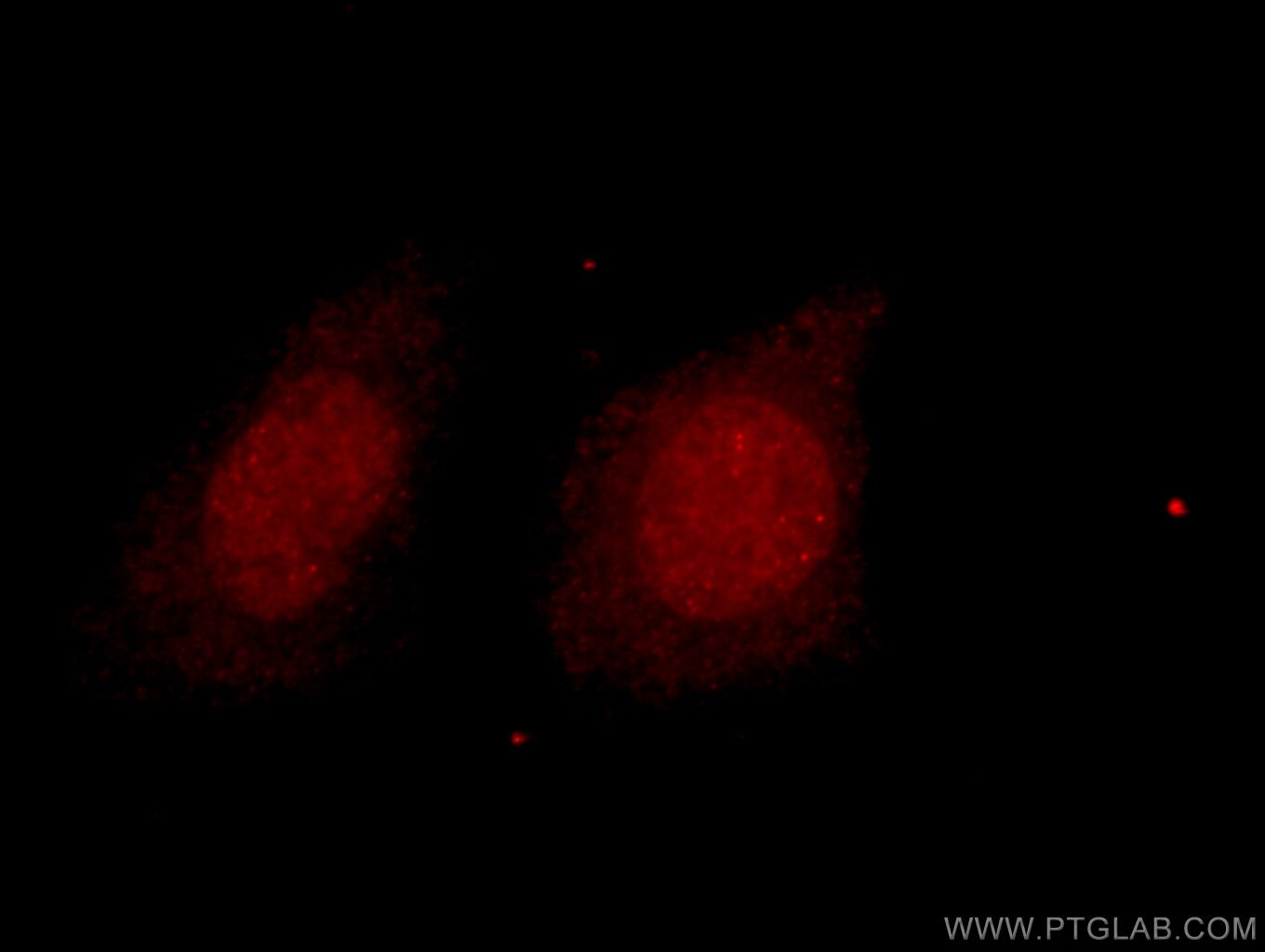WB Figures
WB analysis of HepG2 using 16152-1-AP (same clone as 16152-1-PBS)
HepG2 cells were subjected to SDS PAGE followed by western blot with 16152-1-AP (HDAC2-specific antibody) at dilution of 1:500 incubated at room temperature for 1.5 hours. This data was developed using the same antibody clone with 16152-1-PBS in a different storage buffer formulation.
WB analysis of A431 using 16152-1-AP (same clone as 16152-1-PBS)
A431 cells were subjected to SDS PAGE followed by western blot with 16152-1-AP (HDAC2-specific antibody) at dilution of 1:300 incubated at room temperature for 1.5 hours. This data was developed using the same antibody clone with 16152-1-PBS in a different storage buffer formulation.
WB analysis of HeLa using 16152-1-AP (same clone as 16152-1-PBS)
HeLa cells were subjected to SDS PAGE followed by western blot with 16152-1-AP (HDAC2-specific antibody) at dilution of 1:500 incubated at room temperature for 1.5 hours. This data was developed using the same antibody clone with 16152-1-PBS in a different storage buffer formulation.
WB analysis of human liver using 16152-1-AP (same clone as 16152-1-PBS)
human liver tissue were subjected to SDS PAGE followed by western blot with 16152-1-AP (HDAC2-specific antibody) at dilution of 1:300 incubated at room temperature for 1.5 hours. This data was developed using the same antibody clone with 16152-1-PBS in a different storage buffer formulation.
IHC Figures
IHC staining of human testis using 16152-1-AP (same clone as 16152-1-PBS)
Immunohistochemical analysis of paraffin-embedded human testis using 16152-1-AP (HDAC2-specific antibody) at dilution of 1:50 (under 10x lens). This data was developed using the same antibody clone with 16152-1-PBS in a different storage buffer formulation.
IHC staining of human testis using 16152-1-AP (same clone as 16152-1-PBS)
Immunohistochemical analysis of paraffin-embedded human testis using 16152-1-AP (HDAC2-specific antibody) at dilution of 1:50 (under 40x lens). This data was developed using the same antibody clone with 16152-1-PBS in a different storage buffer formulation.
IHC staining of human skin using 16152-1-AP (same clone as 16152-1-PBS)
Immunohistochemical analysis of paraffin-embedded human skin using 16152-1-AP (HDAC2-specific antibody) at dilution of 1:50 (under 10x lens). This data was developed using the same antibody clone with 16152-1-PBS in a different storage buffer formulation.
IHC staining of human skin using 16152-1-AP (same clone as 16152-1-PBS)
Immunohistochemical analysis of paraffin-embedded human skin using 16152-1-AP (HDAC2-specific antibody) at dilution of 1:50 (under 40x lens). This data was developed using the same antibody clone with 16152-1-PBS in a different storage buffer formulation.
IHC staining of human brain using 16152-1-AP (same clone as 16152-1-PBS)
Immunohistochemical analysis of paraffin-embedded human brain using 16152-1-AP (HDAC2-specific antibody) at dilution of 1:50 (under 10x lens). This data was developed using the same antibody clone with 16152-1-PBS in a different storage buffer formulation.
IHC staining of human brain using 16152-1-AP (same clone as 16152-1-PBS)
Immunohistochemical analysis of paraffin-embedded human brain using 16152-1-AP (HDAC2-specific antibody) at dilution of 1:50 (under 40x lens). This data was developed using the same antibody clone with 16152-1-PBS in a different storage buffer formulation.
IHC staining of human liver using 16152-1-AP (same clone as 16152-1-PBS)
Immunohistochemical analysis of paraffin-embedded human liver using 16152-1-AP (HDAC2-specific antibody) at dilution of 1:50 (under 10x lens). This data was developed using the same antibody clone with 16152-1-PBS in a different storage buffer formulation.
IHC staining of human liver using 16152-1-AP (same clone as 16152-1-PBS)
Immunohistochemical analysis of paraffin-embedded human liver using 16152-1-AP (HDAC2-specific antibody) at dilution of 1:50 (under 40x lens). This data was developed using the same antibody clone with 16152-1-PBS in a different storage buffer formulation.
IHC staining of human spleen using 16152-1-AP (same clone as 16152-1-PBS)
Immunohistochemical analysis of paraffin-embedded human spleen using 16152-1-AP (HDAC2-specific antibody) at dilution of 1:50 (under 10x lens). This data was developed using the same antibody clone with 16152-1-PBS in a different storage buffer formulation.
IHC staining of human spleen using 16152-1-AP (same clone as 16152-1-PBS)
Immunohistochemical analysis of paraffin-embedded human spleen using 16152-1-AP (HDAC2-specific antibody) at dilution of 1:50 (under 40x lens). This data was developed using the same antibody clone with 16152-1-PBS in a different storage buffer formulation.
IHC staining of human heart using 16152-1-AP (same clone as 16152-1-PBS)
Immunohistochemical analysis of paraffin-embedded human heart using 16152-1-AP (HDAC2-specific antibody) at dilution of 1:50 (under 10x lens). This data was developed using the same antibody clone with 16152-1-PBS in a different storage buffer formulation.
IHC staining of human ovary using 16152-1-AP (same clone as 16152-1-PBS)
Immunohistochemical analysis of paraffin-embedded human ovary using 16152-1-AP (HDAC2-specific antibody) at dilution of 1:50 (under 10x lens). This data was developed using the same antibody clone with 16152-1-PBS in a different storage buffer formulation.
IHC staining of human ovary using 16152-1-AP (same clone as 16152-1-PBS)
Immunohistochemical analysis of paraffin-embedded human ovary using 16152-1-AP (HDAC2-specific antibody) at dilution of 1:50 (under 40x lens). This data was developed using the same antibody clone with 16152-1-PBS in a different storage buffer formulation.
IHC staining of human heart using 16152-1-AP (same clone as 16152-1-PBS)
Immunohistochemical analysis of paraffin-embedded human heart using 16152-1-AP (HDAC2-specific antibody) at dilution of 1:50 (under 40x lens). This data was developed using the same antibody clone with 16152-1-PBS in a different storage buffer formulation.
IHC staining of human kidney using 16152-1-AP (same clone as 16152-1-PBS)
Immunohistochemical analysis of paraffin-embedded human kidney using 16152-1-AP (HDAC2-specific antibody) at dilution of 1:50 (under 10x lens). This data was developed using the same antibody clone with 16152-1-PBS in a different storage buffer formulation.
IHC staining of human kidney using 16152-1-AP (same clone as 16152-1-PBS)
Immunohistochemical analysis of paraffin-embedded human kidney using 16152-1-AP (HDAC2-specific antibody) at dilution of 1:50 (under 40x lens). This data was developed using the same antibody clone with 16152-1-PBS in a different storage buffer formulation.

